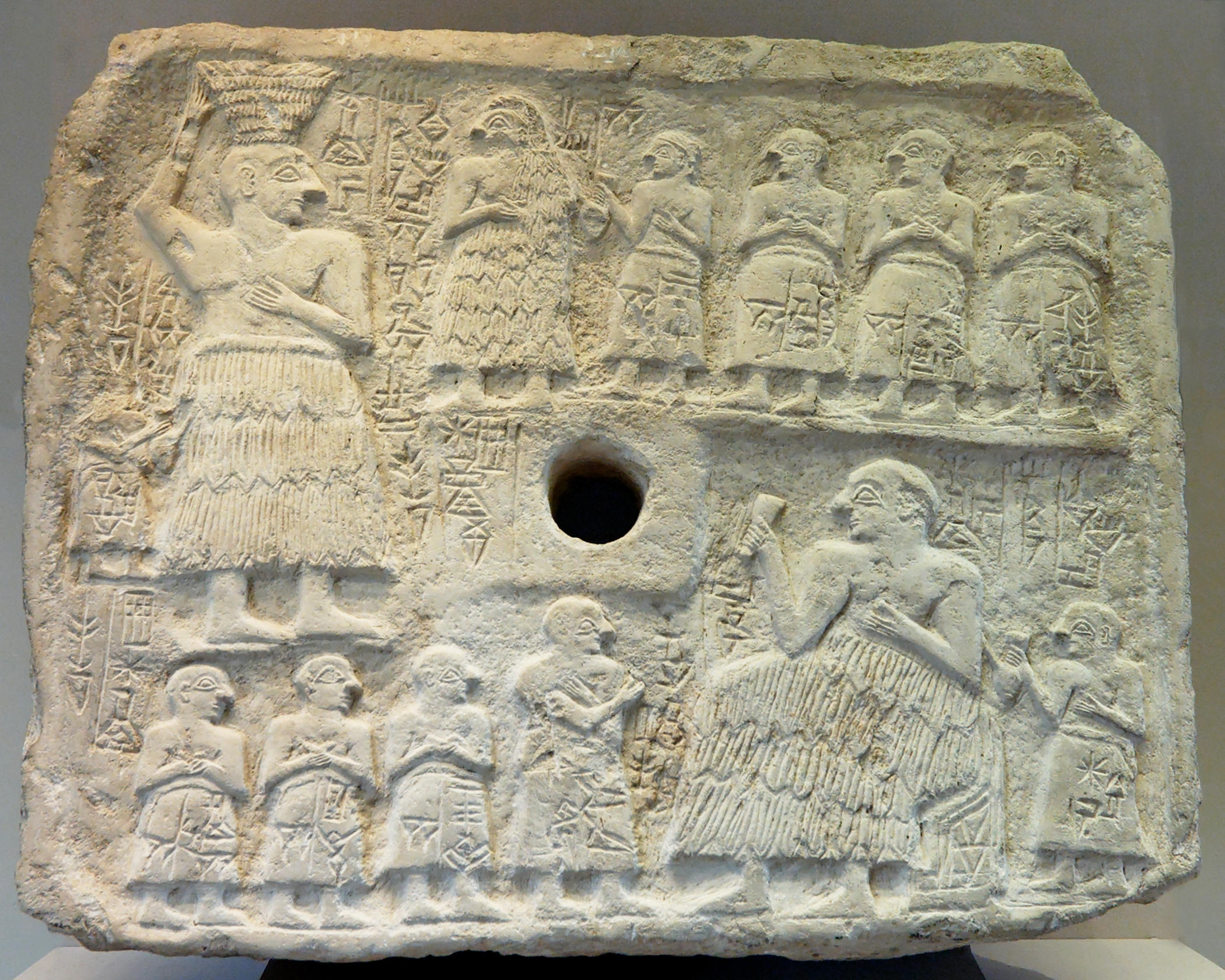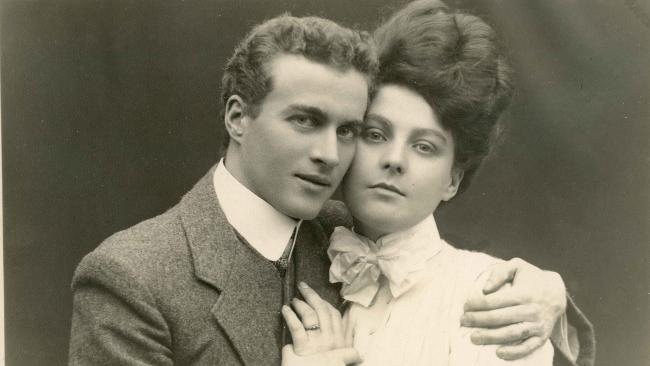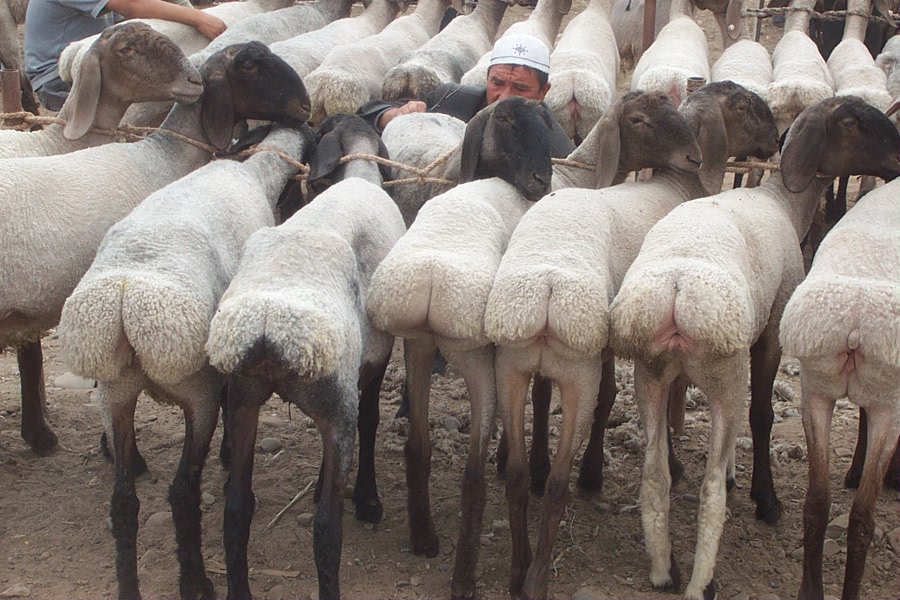|
Nindara
Nindara (, Nindar in sources predating the reign of Gudea) was a Mesopotamian god worshiped in the state of Lagash. He was the husband of Nanshe, and it is assumed that his relevance in Mesopotamian religion depended on this connection. His character remains opaque due to his small role in known texts. Character Nindara's character is not well defined in known sources, and his importance in Mesopotamian religion has been characterized as modest. He was regarded as the husband of Nanshe, and it is presumed that he was actively worshiped in the state of Lagash largely because of this association. Due to fulfilling this role, he belonged to the circle of the deities associated with her, which in addition to him included the goddess Nin-MAR.KI, regarded as her daughter, and the servant god Hendursaga. proposes that he was regarded as the older brother of the last of these deities. It is possible that all three of the deities forming Nanshe's circle had chapels in her main temple, or p ... [...More Info...] [...Related Items...] OR: [Wikipedia] [Google] [Baidu] |
Nanshe
Nanshe ( ) was a Mesopotamian goddess in various contexts associated with the sea, marshlands, the animals inhabiting these biomes, namely bird and fish, as well as divination, dream interpretation, justice, social welfare, and certain administrative tasks. She was regarded as a daughter of Enki and sister of Ningirsu, while her husband was Nindara, who is otherwise little known. Other deities who belonged to her circle included her daughter Nin-MAR.KI, as well as Hendursaga, Dumuzi-abzu and Shul-utula. In Ur she was incorporated into the circle of Ningal, while in incantations she appears alongside Ningirima or Nammu. The oldest attestations of the worship of Nanshe come from the Uruk period. Her cult center was Tell Zurghul, known in antiquity as Nina. Another place associated with her, Sirara, was likely a sacred distrinct in this city. She was also worshiped elsewhere in the state of Lagash. Sanctuaries dedicated to her existed in its eponymous capital, as well as in ... [...More Info...] [...Related Items...] OR: [Wikipedia] [Google] [Baidu] |
Dumuzi-abzu
Dumuzi-abzu (), sometimes spelled Dumuziabzu, was a Mesopotamian goddess worshiped in the state of Lagash. She was the tutelary deity of Kinunir. In modern scholarship it is assumed that in most contexts Dumuzi-abzu should not be confused with Dumuzi, the husband of Inanna, even though her name could be shortened to Dumuzi. It is nonetheless possible that after she ceased to be worshiped, the name Dumuzi-abzu was misunderstood as belonging to him. Character Dumuzi-abzu was the tutelary goddess of Kinunir, a city located near Lagash. It was also known under the name Kinirša. It is not universally agreed that Kinnir was yet another form of the same name, but Manfred Krebernik nonetheless argues that its city goddess, Nin-Kinnir, "lady of Kinnir," was a name of Dumuzi-abzu. A reference to her role as a city goddess is known from ''Lamentation over the Destruction of Ur'', according to which during a tumultuous period "Dumuziabzu has abandoned the house in Kinirša." It is assumed ... [...More Info...] [...Related Items...] OR: [Wikipedia] [Google] [Baidu] |
Simut (god)
Simut or Šimut (Shimut) was an Elamite god. He was regarded as the herald of the gods, and was associated with the planet Mars. He was closely associated with Manzat (goddess), Manzat, a goddess representing the rainbow. He appears in inscriptions of various Elamite kings which mention a number of temples dedicated to him. However, it is not known which city served as his main cult center. He was also worshiped in Mesopotamia, where he was compared with the war god Nergal. Name Various spellings of Simut's name are attested in Elamite sources, including phonetic ''Dingir, dSi-mu-ut'', ''dŠi-mu-ut-ta'', ''dŠi-mu-ut'' and ''dŠi-mut'', as well as logographic dMAN/dPAP. The last spelling might be related to one of the Mesopotamian names of theplanet Mars, mulMAN-''ma'', "the strange star". It is also possible that in at least one location another logographic spelling of his name was Nindara, NIN.DAR.(A). The romanization "Simut" reflects the standard spelling of this theonym in ... [...More Info...] [...Related Items...] OR: [Wikipedia] [Google] [Baidu] |
Mesopotamian God
Deities in ancient Mesopotamia were almost exclusively Anthropomorphism, anthropomorphic. They were thought to possess extraordinary powers and were often envisioned as being of tremendous physical size. The deities typically wore ''melam'', an ambiguous substance which "covered them in terrifying splendor" and which could also be worn by heroes, kings, giants, and even demons. The effect that seeing a deity's ''melam'' has on a human is described as ''ni'', a word for the "Paresthesia, physical creeping of the flesh". Both the Sumerian language, Sumerian and Akkadian languages contain many words to express the sensation of ''ni'', including the word ''puluhtu'', meaning "fear". Deities were almost always depicted wearing horned caps, consisting of up to seven superimposed pairs of ox-horns. They were also sometimes depicted wearing clothes with elaborate decorative gold and silver ornaments sewn into them. The ancient Mesopotamians believed that their deities lived in Heaven, ... [...More Info...] [...Related Items...] OR: [Wikipedia] [Google] [Baidu] |
Nindub
Nindub or Ninduba was a Mesopotamian god associated with exorcisms. He is attested chiefly in sources from the state of Lagash, including Early Dynastic offering lists and the cylinders of Gudea. He continued to be worshiped in this area in the Ur III period. However, in the Old Babylonian period he appears only in a small number of god lists presumed to reflect archaic tradition. Name and character Nindub's name was written in cuneiform as '' dnin-dub'' or less commonly as ''dnin-dub-ba''. It is conventionally translated as "lord (of the) clay tablet". However, argues that based on the pairing of this god with the deity ''dnin-ùr'' in offering lists from Lagash suggests that his name initially might have been depended on another meaning of the sign ''dub'', "to smooth", which was an antonym of ''ùr'', "to pile up". Based on Nindub's role in the literary text inscribed on the cylinders of Gudea it is presumed that he functioned as a divine exorcist. The proposal that Nindu ... [...More Info...] [...Related Items...] OR: [Wikipedia] [Google] [Baidu] |
Lagash
Lagash (; cuneiform: LAGAŠKI; Sumerian language, Sumerian: ''Lagaš'') was an ancient city-state located northwest of the junction of the Euphrates and Tigris rivers and east of Uruk, about east of the modern town of Al-Shatrah, Iraq. Lagash (modern Al-Hiba in Dhi Qar Governorate) was one of the oldest cities of the Ancient Near East. The ancient site of Nina (Tell Zurghul) is around away and marks the southern limit of the state. Nearby Girsu (modern Telloh), about northwest of Lagash, was the religious center of the Lagash state. The Lagash state's main temple was the E-ninnu at Girsu, dedicated to the god Ningirsu. The Lagash state incorporated the ancient cities of Lagash, Girsu, Nina. History Though some Uruk period pottery shards were found in a surface survey, significant occupation at the site of Lagash began early in the 3rd Millennium BC, in the Early Dynastic Period (Mesopotamia), Early Dynastic I period (c. 2900–2600 BC), surface surveys and excavations show tha ... [...More Info...] [...Related Items...] OR: [Wikipedia] [Google] [Baidu] |
Drehem
Puzrish-Dagan (modern Drehem) (Tall ad-Duraihim) is an important archaeological site in Al-Qādisiyyah Governorate (Iraq). It is best-known for the thousands of Clay tablet, clay tablets that are known to have come from the site through Archaeological looting, looting during the early twentieth century. History of research Puzrish-Dagan came first to the attention of scholars when clay tablet, clay tablets coming from the site started to appear on the antiquities market in 1909-1910. Based on information from the antiquities traders who sold the tablets, Puzrish-Dagan could be identied with modern Drehem in Iraq. Since then, some 12,000 tablets thought to have come from the site have been published. The objects are scattered across numerous collections, for example those of the Royal Ontario Museum, the Institute for the Study of Ancient Cultures, Harvard Museum, and the Iraq Museum. Stephen Herbert Langdon briefly excavated there in 1924. The site was surveyed by Robert McCorm ... [...More Info...] [...Related Items...] OR: [Wikipedia] [Google] [Baidu] |
Ur III Period
The Third Dynasty of Ur or Ur III was a Sumerian dynasty based in the city of Ur in the 22nd and 21st centuries BC (middle chronology). For a short period they were the preeminent power in Mesopotamia and their realm is sometimes referred to by historians as the Neo-Sumerian Empire. The Third Dynasty of Ur is commonly abbreviated as "Ur III" by historians studying the period. It is numbered in reference to previous dynasties, such as the First Dynasty of Ur (26-25th century BC), but it seems the once supposed Second Dynasty of Ur was never recorded. The Third Dynasty of Ur was the last Sumerian dynasty which came to preeminent power in Mesopotamia. It began after several centuries of control, exerted first by the Akkadian Empire, and then, after its fall, by Gutian and independent Sumerian city-state kings. It controlled the cities of Isin, Larsa, and Eshnunna and extended as far north as Upper Mesopotamia. The Ur III provinces, from north to south were Sippar, Tiwe, Urum, Pu� ... [...More Info...] [...Related Items...] OR: [Wikipedia] [Google] [Baidu] |
Betrothal
An engagement or betrothal is the period of time between the declaration of acceptance of a marriage proposal and the marriage itself (which is typically but not always commenced with a wedding). During this period, a couple is said to be ''fiancés'' (from wikt:fiancé#French, the French), "betrothed", "intended", "affianced", "engaged to be married", or simply "engaged". Future brides and grooms may be called ''fiancée'' (feminine) or ''fiancé'' (masculine), "the betrothed", "wife-to-be" or "husband-to-be", respectively. The duration of the courtship varies vastly, and is largely dependent on cultural norms or upon the agreement of the parties involved. Long engagements were once common in formal arranged marriages, and it was not uncommon for parents betrothing children to arrange marriages many years before the engaged couple were old enough. This is still done in some countries. Many traditional Christian denominations have optional rites for Christian betrothal (also k ... [...More Info...] [...Related Items...] OR: [Wikipedia] [Google] [Baidu] |
Kesh (Sumer)
Kesh (Keš or Keši) was an ancient Sumerian city and religious site, whose patron goddess was Ninhursag. It was included on the "city seals" found at Jemdat Nasr. These seals sparked the theory at an Early Dynastic Kengir League control Sumer at that time. Its location is uncertain; some of the possible sites put forth include Al-Ubaid, near Ur, or Tell al-Wilayah near Adab or Abu Salabikh or even Tell Jidr though the consensus is now with Tell al-Wilayah or Tulul al-Baqarat. The city is known to be located near to the ancient city of Irisaĝrig and was under the control of that city. According to a riddle from Early Dynastic times, there was a Kesh Canal, which Adab was on. It has been suggested that Mesilim, traditionally considered "King of Kish" was actually a ruler of Kesh, based on epigraphic reasons and by the fact that he called himself "beloved son of Ninharsag". Historical sources A number of personal names from the Early Dynastic period include the city of Kesh. ... [...More Info...] [...Related Items...] OR: [Wikipedia] [Google] [Baidu] |
Fat-tailed Sheep
The fat-tailed sheep is a general type of domestic sheep known for their distinctive large tails and hindquarters. Fat-tailed sheep breeds comprise approximately 25% of the world's sheep population, and are commonly found in northern parts of Africa, the Middle East, and across Central Asia to China. The tail fat from those sheep is an important ingredient in many regional cuisines. Varieties and distribution Two general varieties of fat-tails exist, the broad fat-tails and the long fat-tails. The long-tailed varieties have the smallest geographical distribution, being found mostly in Arabia (a variety called the Nejd, black with a white head, named for the Nejd region, and raised also in Iraq, Central Asia, and Syria) and in the Caucasus (the Colchian, for the Colchis territory, and the Circassian). Broad varieties include the Hajaz (Arabia, small and white, named for the Hejaz region), the Arabi (black or piebald, in Arabia and Iraq), the Awassi (the dominant variety in I ... [...More Info...] [...Related Items...] OR: [Wikipedia] [Google] [Baidu] |



